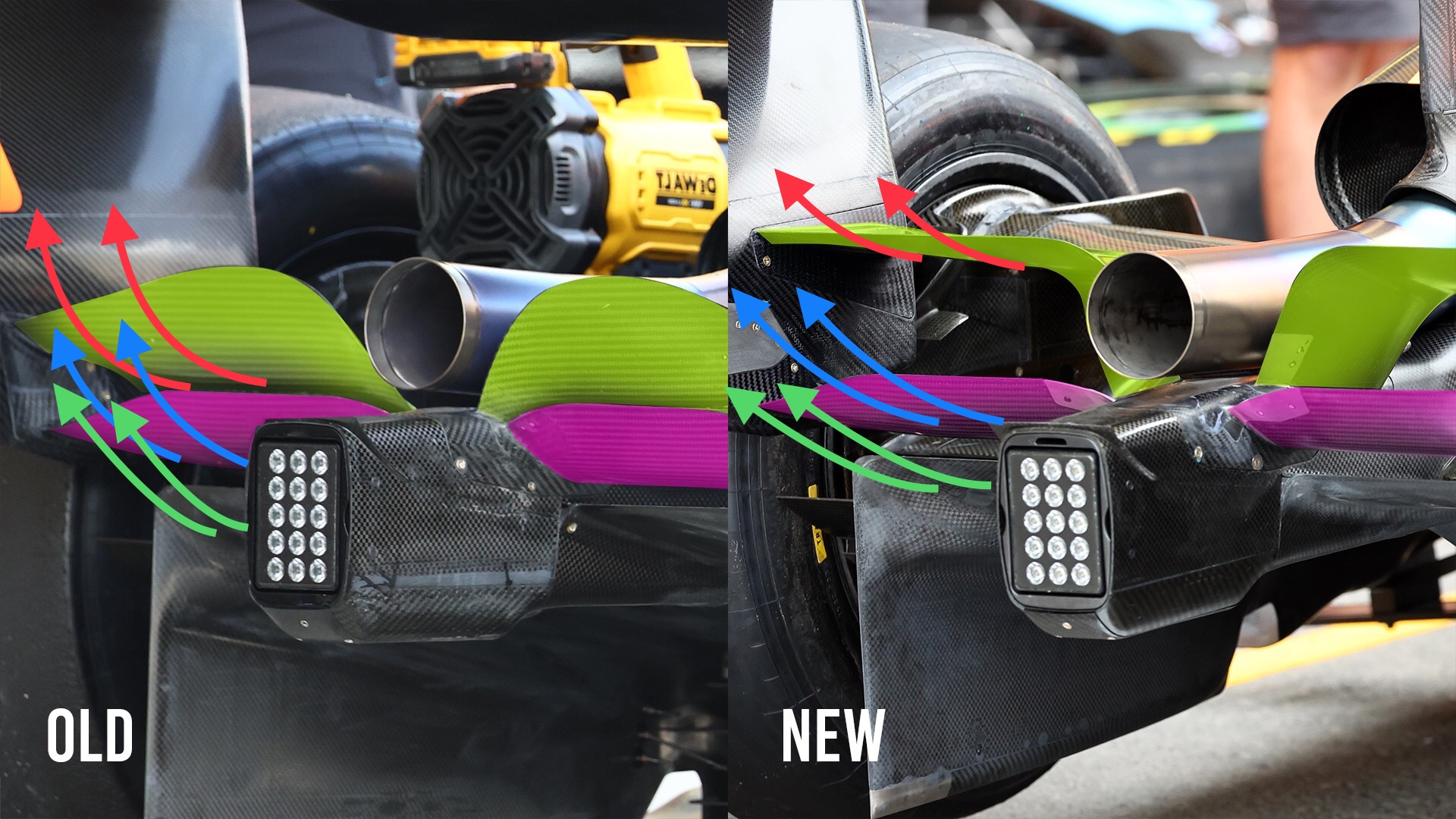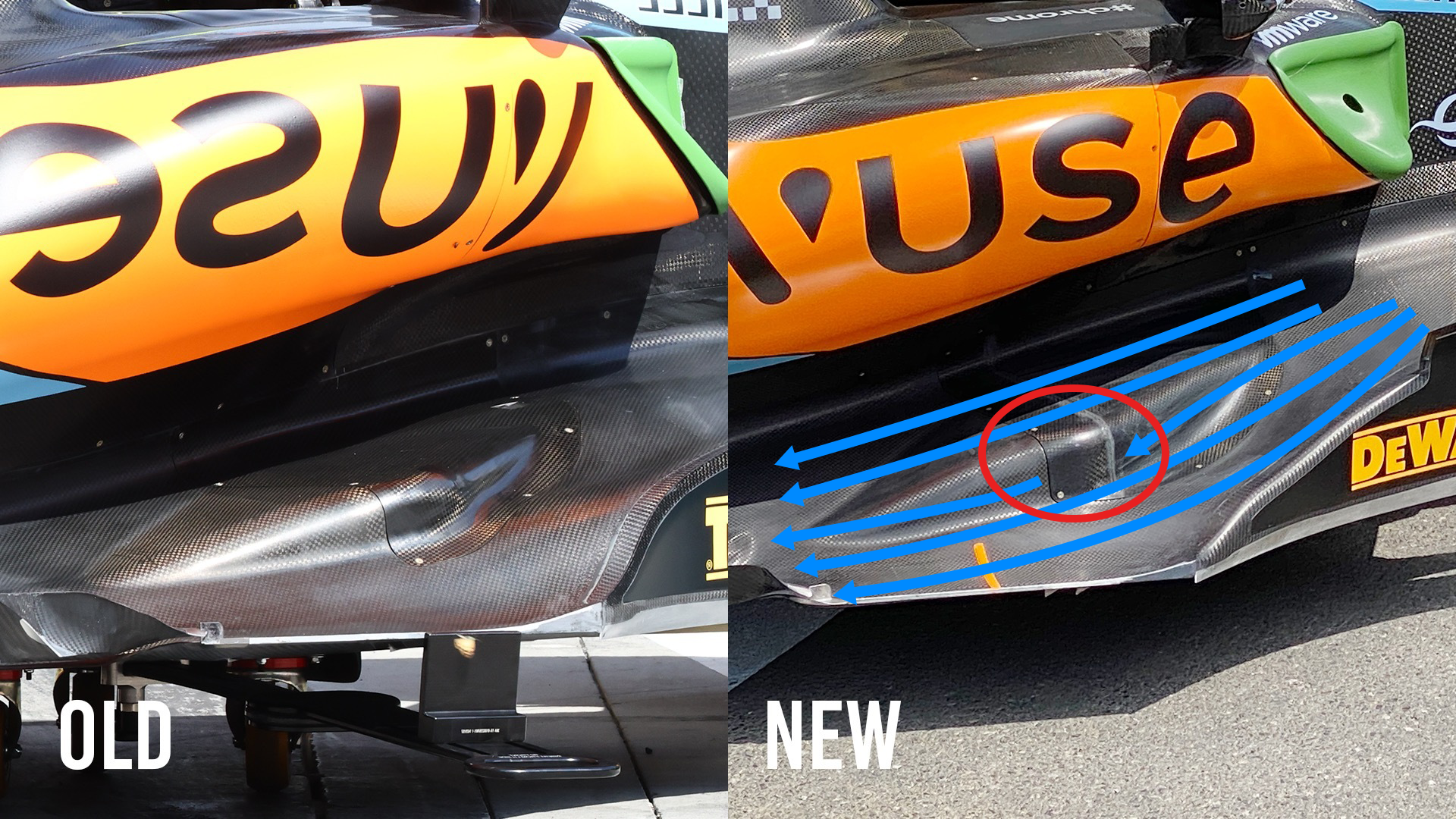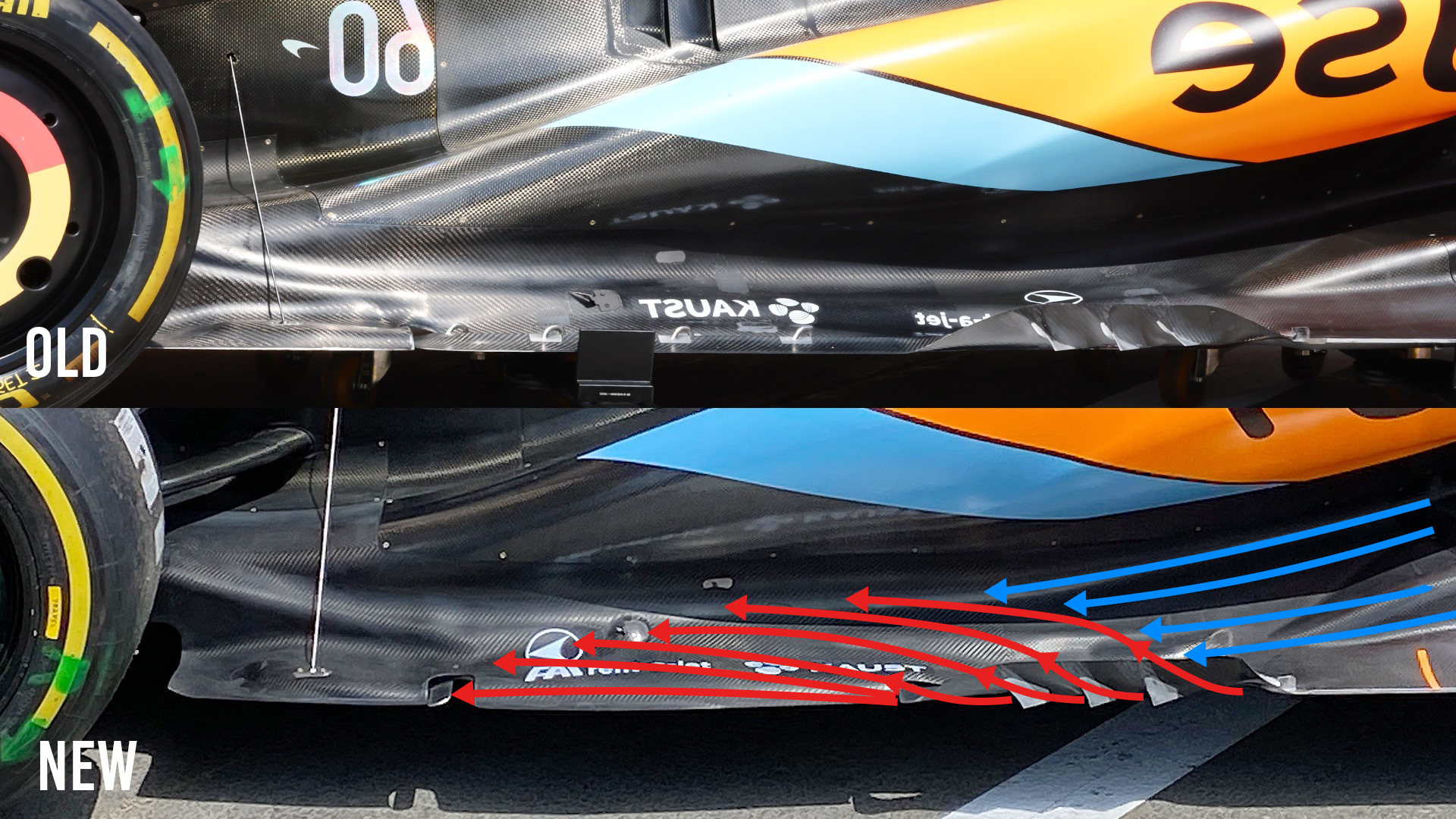With Baku being such a high-speed track and McLaren struggling for top speed, efficiency – like for everyone else – is of prime importance.
The beam wing is one area where, because of its interaction with the upper wing and diffuser, teams will normally suffer the consequence of that extra bit of drag. This interaction helps with the consistency of the underfloor, but as it’s very difficult to simulate the underfloor porpoising and bouncing, sometimes you can make the wrong decisions.

The blue and red arrows show the rough change in the airflow coming off the beam wing mainplane and the beam wing flap. The flow will be much less aggressive, so have less influence on the airflow coming out of the diffuser, shown by the green arrows.
With these beam wing changes alone, I would expect McLaren to have created more potential porpoising and bouncing problems. If we think back to last year when an 80-year-old version of Lewis Hamilton was crouched down after getting out of his car, Baku is one of the worst for this problem with its combination of high speed and bumps so it’s very easy to tip the problem over the edge.
The floor edge changes are what the team has characterised as a change in development direction and focus on the edge detail and the upper surface of the front corner.
Taking the latter first, the upper surface in this area seems to have been reprofiled to be a little more sympathetic to the airflow coming through the sidepod undercut area.

It is still fairly lumpy where the lower side-impact structure ends (red ellipse), which will have an influence on this upper surface airflow (blue arrows).
The airspeed over this surface is important to maximise the scavenging effect it has on the turned-up exit area where the small splitters are positioned on the front corner of the floor (red arrows).

As I have said many times, this area needs to work as its own independent diffuser, allowing the main diffuser at the rear of the car to scavenge the airflow coming through under the centre section of the leading edge of the underfloor.
If you leave all the work of accelerating the airflow under the complete floor surface to the diffuser then the volume change is simply not big enough and that, combined with the inevitable leakage along the sides of the floor, means you simply have less underfloor downforce.
The detail on the underfloor edge going further rearwards is to connect the airflow that is trying to tuck under the sides of the floor to the tyre squirt area inside the rear tyre and allow this tyre squirt to pull that flow along the edge of the floor. If this can be achieved, it will work like an air cushion skirt sealing the sides of the floor, meaning the diffuser will be more efficient.
With only one free practice session in Baku, McLaren is taking on a lot. It will need spotless running if it is to get the best out of it this weekend.
Review: Understanding the F1 tech war
No other sport plays so heavily on the technological developments taking place from race to race and year to year. The tech war between manufacturers is as old as F1 itself and remains as fascinating and integral as ever.
However, explaining the complex developments of the cars is no easy feat, and for new fans of the sport can often appear daunting. In Formula 1 Technology The Engineering Explained, Steve Rendle sets out to demystify these dark arts, and supported by the ever-informative drawings of Giorgio Piola he does a good job of breaking down the various components of the cars, detailing the historical evolution of that technology over the years and explaining the rulebook rationale behind changes that have been enforced on the designers.
It’s presented in a way that shouldn’t deter anyone without a degree in aerodynamics but there is easily enough depth to it to ensure even the most well-versed fans learn something new. – Andrew van de Burgt
Formula 1 Technology The Engineering Explained. £55.00. www.evropublishing.com


